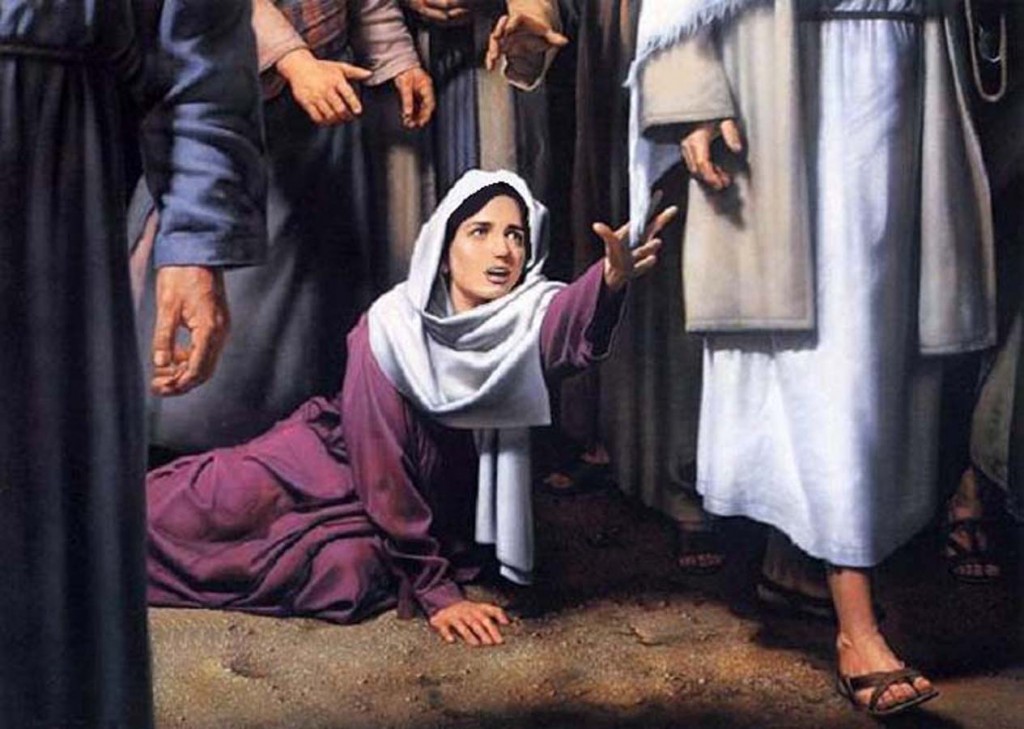Christ’s Dilemma – by Desmond Ford
- Atonement
- Bible
- Bible study
- Calvary
- Christian Evidences
- Christian Living
- Christianity
- condemnation
- Death
- Dr Desmond Ford
- Eternal Life
- Faith
- Forgiveness
- Freedom
- Gospel
- Holy Spirit
- Hope
- Jesus
- Love
- Righteousness
Feb 14, 2015 4578
![]()
 Consider the story of the adulteress recorded in John 8. She is the cowering centre of a jabbering, accusing crowd. How she longs for an enveloping earthquake or destructive lightning, but better than either to her is the healing presence of Christ. Would you notice the instructive comments on the situation by Paul Tournier in Guilt and Grace, p.111:
Consider the story of the adulteress recorded in John 8. She is the cowering centre of a jabbering, accusing crowd. How she longs for an enveloping earthquake or destructive lightning, but better than either to her is the healing presence of Christ. Would you notice the instructive comments on the situation by Paul Tournier in Guilt and Grace, p.111:
“This woman symbolises all the despised people of the world. ‘All those whom we see daily crushed by judgments which weigh heavily upon them by a thousand and one arbitrary or unjust prejudices. But also by fair judgments placed on the very healthiest morality and the most authentic living law. She symbolises all psychological, social and spiritual inferiority and her accusers symbolise the whole of judging, condemnatory contemptuous humanity. It’s as if the presence of Christ brought about the strangest of inversions. He wipes out the guilt in the woman who was crushed by it and arouses guilt in those who felt none. The scene is the world in miniature with ourselves at the heart of it. Ourselves and Him.
The light that shows us our sins becomes the light that heals. Christ is that Light. Confronted with Him, we learn that sin is not merely the transgression of the law; it’s the rejection of God Himself. Salvation also is not an abstract idea, it too is a Person. That same Person. Now we see that the purpose of the universal phenomenon of guilt is not to condemn and to destroy, but to save.”
“Neither do I condemn thee” says Christ, “go and sin no more.” Let it be carefully noted from this story that the woman was not the only one with a problem. Christ too seemed in a dilemma. He claimed to be both the Friend of publicans and sinners and the Upholder of the divine law. How could these be reconciled? It would seem that in this situation, He must choose one role or the other. It mirrors God’s eternal problem before His universe. How could He maintain His law of justice and right and yet save the transgressors of that law?
Note how Christ dealt with the situation of the adulteress. With His finger He wrote in the dust. Only once in the New Testament do we read of Christ writing. Only once in the Old Testament do we read of writing done by the finger of God. It is as if Christ said to the woman’s accusers, “You talk of the law’s requirements to Me; don’t you know I wrote that original law?”
But the same law required that the witnesses of evil assist in the carrying out of the death sentence for its violation (See Deut. 17:7). So this implied that the witnesses were themselves innocent of such transgression and Christ admonishes the cruel crowd therefore “He that is without sin among you, let him first cast a stone at her.” The record declares they which heard it, being convicted by their own conscience, went out one by.”
My friends, on what grounds could Christ forgive the woman? That law, the ten commandments, which had been written by the finger of God, resided in the sanctuary under the mercy seat which once a year was sprinkled with the blood of sacrifice. Above the mercy seat the glorious Shekinah, the One Who was both Lawgiver and Redeemer, could look with compassion at that broken law through the mercy seat because of the sprinkled blood. That blood was a symbol of a sacrifice of eternal value. The sacrifice of the divine Son of God, equivalent to the death of all the world. God can be both just and the Justifier of the penitent sinner because He has exacted the penalty, your penalty, the penalty of the violated law.
He not only required it but He provided it.
– Des Ford. Rom 8:27–32 (From “Why the Cross?”)
